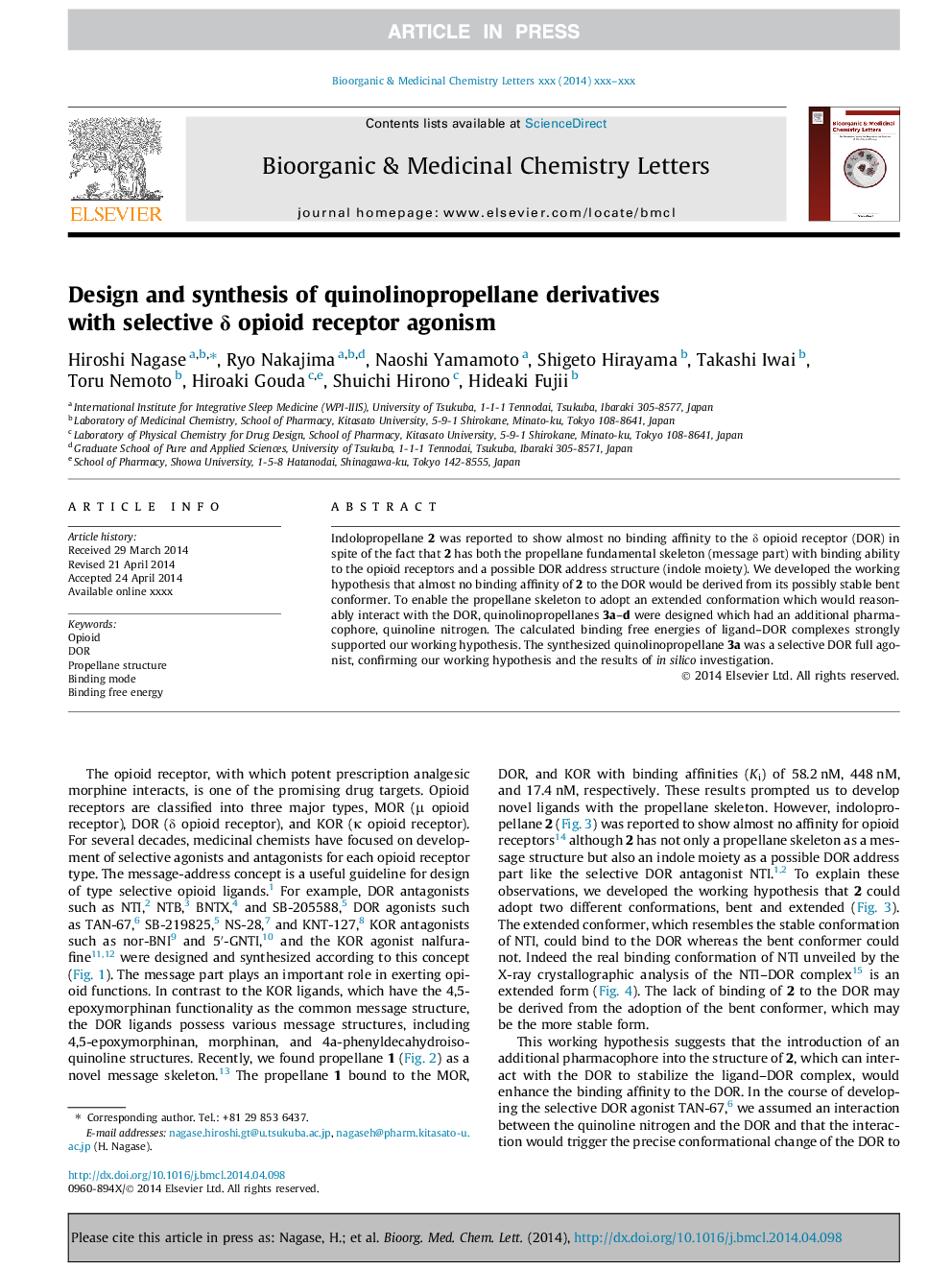| Article ID | Journal | Published Year | Pages | File Type |
|---|---|---|---|---|
| 10591836 | Bioorganic & Medicinal Chemistry Letters | 2014 | 4 Pages |
Abstract
Indolopropellane 2 was reported to show almost no binding affinity to the δ opioid receptor (DOR) in spite of the fact that 2 has both the propellane fundamental skeleton (message part) with binding ability to the opioid receptors and a possible DOR address structure (indole moiety). We developed the working hypothesis that almost no binding affinity of 2 to the DOR would be derived from its possibly stable bent conformer. To enable the propellane skeleton to adopt an extended conformation which would reasonably interact with the DOR, quinolinopropellanes 3a-d were designed which had an additional pharmacophore, quinoline nitrogen. The calculated binding free energies of ligand-DOR complexes strongly supported our working hypothesis. The synthesized quinolinopropellane 3a was a selective DOR full agonist, confirming our working hypothesis and the results of in silico investigation.
Related Topics
Physical Sciences and Engineering
Chemistry
Organic Chemistry
Authors
Hiroshi Nagase, Ryo Nakajima, Naoshi Yamamoto, Shigeto Hirayama, Takashi Iwai, Toru Nemoto, Hiroaki Gouda, Shuichi Hirono, Hideaki Fujii,
